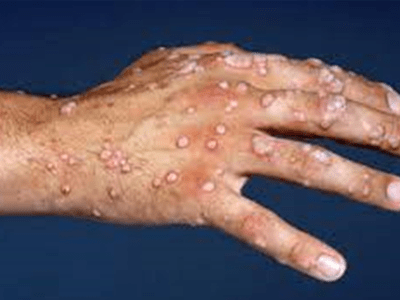A wart is generally a small, rough tumor, typically on hands and feet, that can resemble a cauliflower or a solid blister. Warts are common, and are caused by a viral infection, specifically by the human papilloma virus (HPV) and are contagious when in contact with the skin of an infected person. It is also possible to get warts from using towels or other objects. They typically disappear after a few months but can last for years and can recur.
Types of wart
A range of different types of wart has been identified, varying in shape and site affected, as well as the type of human papillomavirus involved.[1] These include:
- common wart (Verruca vulgaris): a raised wart with roughened surface, most common on hands and knees
- flat wart (Verruca plana): a small, smooth flattened wart, tan or flesh coloured, which can occur in large numbers; most common on the face, neck, hands, wrists and knees
- filiform or digitate wart: a thread- or finger-like wart, most common on the face, especially near the eyelids and lips
- plantar wart (verruca, Verruca pedis): a hard sometimes painful lump, often with multiple black specks in the center; usually only found on pressure points on the soles of the feet
- mosaic wart: a group of tightly clustered plantar-type warts, commonly on the hands or soles of the feet
- genital wart (venereal wart, Condyloma acuminatum, Verruca acuminata): a wart that occurs on the genitalia.

